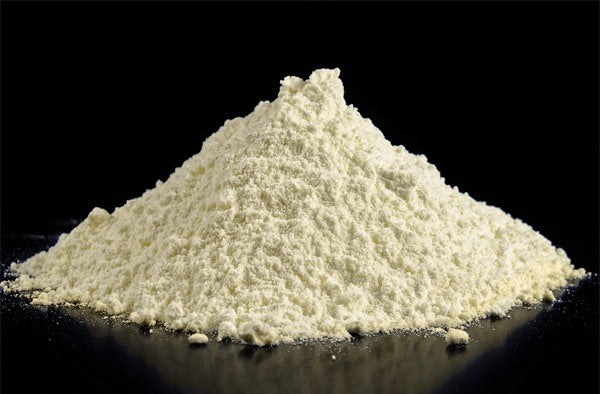
Xanthan Gum and Food Allergies
Share
So what do we consume possibly almost every day but unaware of it? A lot of things and one of those things is Xanthan Gum. Unless, of course, you’re a food allergy parent or have food allergies then you’re probably familiar with it.
What is Xanthan Gum?

Xanthan Gum is secreted by bacteria called Xanthomonas Campestris through fermentation. It was discovered by Allene Rosalind Jeanes and her team around the 1960s and was known as a well-researched food additive approved for consumption. It is used as a thickening agent or stabilizers to a wide variety of products such as foods, beverages, cosmetics, etc.
Is Xanthan Gum Really Safe for Consumption?
FDA approved its usage so it’s safe to think that careful studies and inspections were made by proper authority to say that it’s okay for consumption. There are other studies showing that it also has health benefits like lowering blood sugar levels and as an effective laxative. One study also shows its potential against cancer as it helps in slowing down its growth. It is also a popular gluten substitute for those with celiac disease or gluten allergy.
Xanthan Gum is found in:
Foods

- Salad dressings
- Fruit Juices
- Ice Creams / Dairy foods
- Gluten-free foods
- Low-fat foods
- Baked goods
- Soups
- Gravies and sauces
- Syrups
- Some canned meat
Personal Care

- Toothpaste
- Shampoo
- Conditioner
- Lotions and creams
- Sunblock
- Medicines
Other Names for Xanthan Gum
Xanthomonas campestris, Corn Sugar Gum, Goma Xantana, Gomme de Sucre de Maïs, Gomme de Xanthane, Gomme Xanthan, Polysaccharide de Type Xanthane, Polysaccharide Xanthane, Bacterial Polysaccharide, Xanthan, Polysaccharide Bactérien.
Can it trigger food allergy reactions?
Unfortunately yes, Xanthan Gum is derived from sugar with the help of the bacteria and that sugar may be derived from corn, wheat, soy, and dairy. So unless you can determine where the Xanthan Gum was derived from, it’s best to avoid it especially if you are allergic to these products. Xanthomonas Campestris bacteria lived in cruciferous plants like broccoli, cabbage, or kale, so if you are severely allergic to these foods, then XG may be contaminated.
There are reported cases of anaphylaxis triggered by Xanthan Gum so we greatly advise seeking professional opinion like if it’s in medicine then confirm it with your doctor or if it’s newly prescribed toothpaste then clarify your food allergy condition with your dentist before using it.
Xanthan Gum Intolerance

Too much XG may cause some digestive issues as our body cannot digest it. It is due to its characteristic to absorb water then turn into a gel inside our digestive system, thus resulting in feeling of fullness and to some people with stomach sensitivities, stomach ache. If you have diarrhea you might want to avoid getting it in your system, due to its properties, it may help bind moisture in your digestive track making your condition worse.
XG is not all that bad and has its health benefits, and to add to it, another thing that we discover is it can also help people to lose weight due to its expanding properties, it can easily make you feel full. If you have dry mouth (Sjogren’s syndrome), it can promote salivation and lastly, it can help you regulate your stool. So again, we wanted to clarify that we’re not against XG but the purpose of laying out all these details is to at least have a better understanding of how it’s created, where it came from, and why it can trigger anaphylaxis.
References:
WebMD – https://www.webmd.com/vitamins/ai/ingredientmono-340/xanthan-gum
RX List – https://www.rxlist.com/xanthan_gum/supplements.htm#OtherNames
Science Direct – https://www.sciencedirect.com/topics/food-science/xanthan-gum
